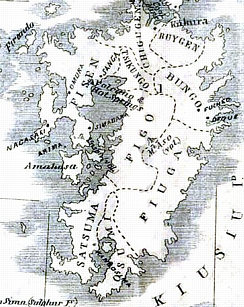Dotstream
Japanese braille, a.k.a. 点字 ("dot characters"), is a marvel of design. You have to hear this.
The basic Japanese CV moraic unit is covered by reserving the top left of the 6-dot block for vowels (5) and the bottom right for 7 of the consonants (/k/, /s/, /t/, /n/, /h/, /m/, /r/). These signs are invariant, so the "vowel" part is the same in /ka/, /sa/, etc., and the "consonant" part is the same in /ka/, /ki/, etc.:
*- *- *- -* -- *- -* -* -* sa ka ki
/ya/, /yu/, /yo/, /wa/, and /(w)o/ form an inverse set in which the vowels are at the bottom right and the consonants at top left. (Since modern Japanese has only five vowels, that leaves 2 of the possible 7 top-left dot patterns free after vowels are assigned; these are the two that are used for /y/ and /w/.
/N/ is just the bottom-right consonant pattern for /m/, with the top-left vowel pattern left empty. Clever.
The consonant-geminating small /tu/ and the vowel-lengthening line have their own symbols, as do the dakuten (dots) and handakuten (circle).
The interesting part is that the latter two come before the character, not after (as they do in half-width katakana, for example). Similarly, yōon (where a mora has a /y/ in it, e.g. /kya/ vs /ka/) is also handled by a character before the affected syllable, rather than a special set of "small /ya/" (etc.) characters that come after the /ki/ (etc.)
Why use prefixes for this stuff, rather than just reproducing the standard Japanese writing system? I think I know: it's so that you never have to go back and revise your reading of character n based on what character n+1 happens to be. You never say "ki -- no, wait, there's a dakuten after it, so that's gi... no, hang on, there's a small /ya/, so it's actually gya..."
Looking at a page lets you take in a bunch of information at once, as a gestalt; presumably, running your finger across it is different. No matter how fast you get, the characters still come in one by one in linear order. So it makes sense to design your system so that you can always be 100% sure, at any given time, of all the information you have so far.
![[No-sword]](http://no-sword.jp/images/site/no-sword_banner.jpg)


![[Valentine Island]](http://no-sword.jp/images/2008/2008-02-11_e.jpg)
![[IMG]](http://no-sword.jp/images/2008/2008-02-04_s.jpg)


